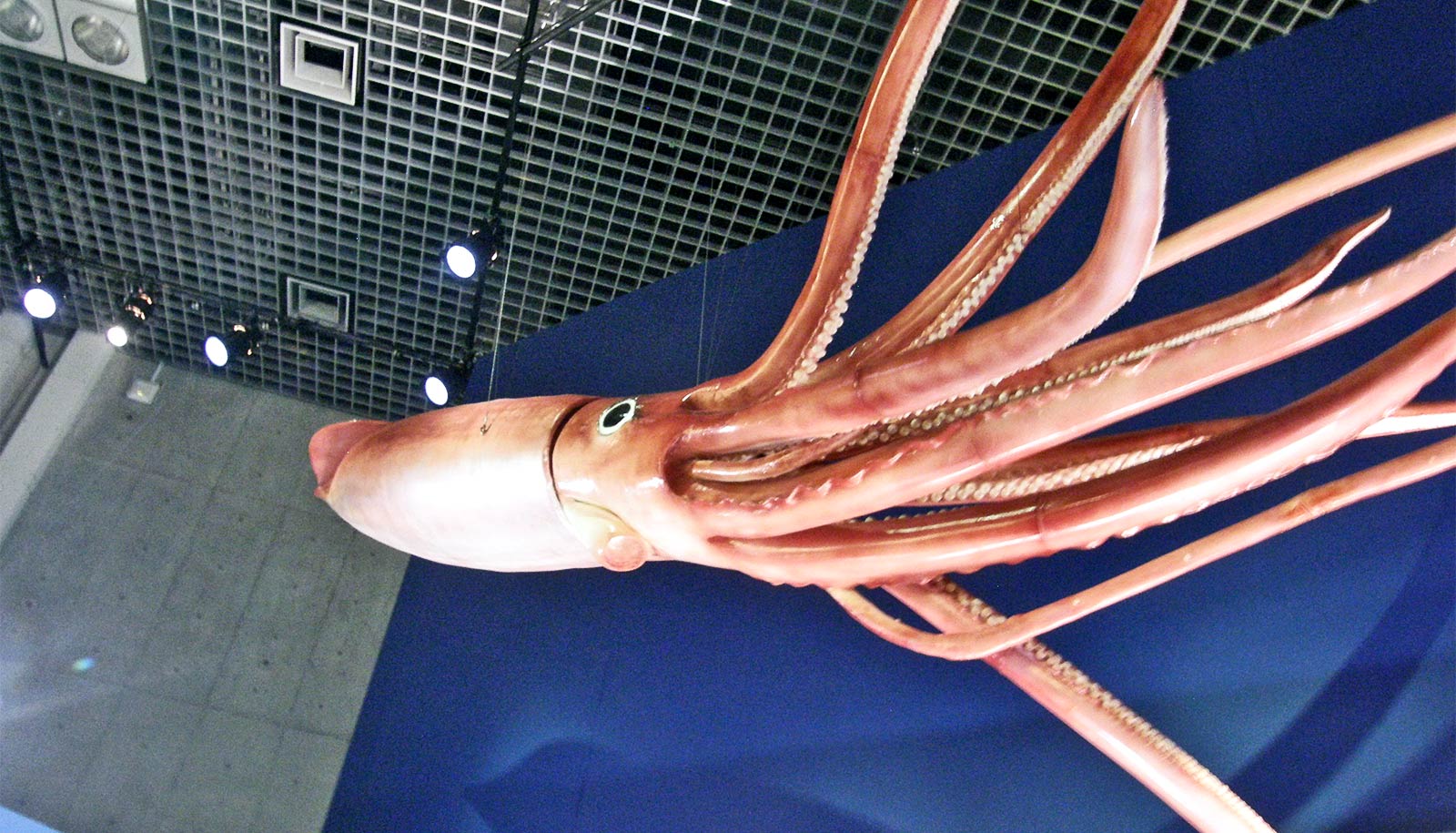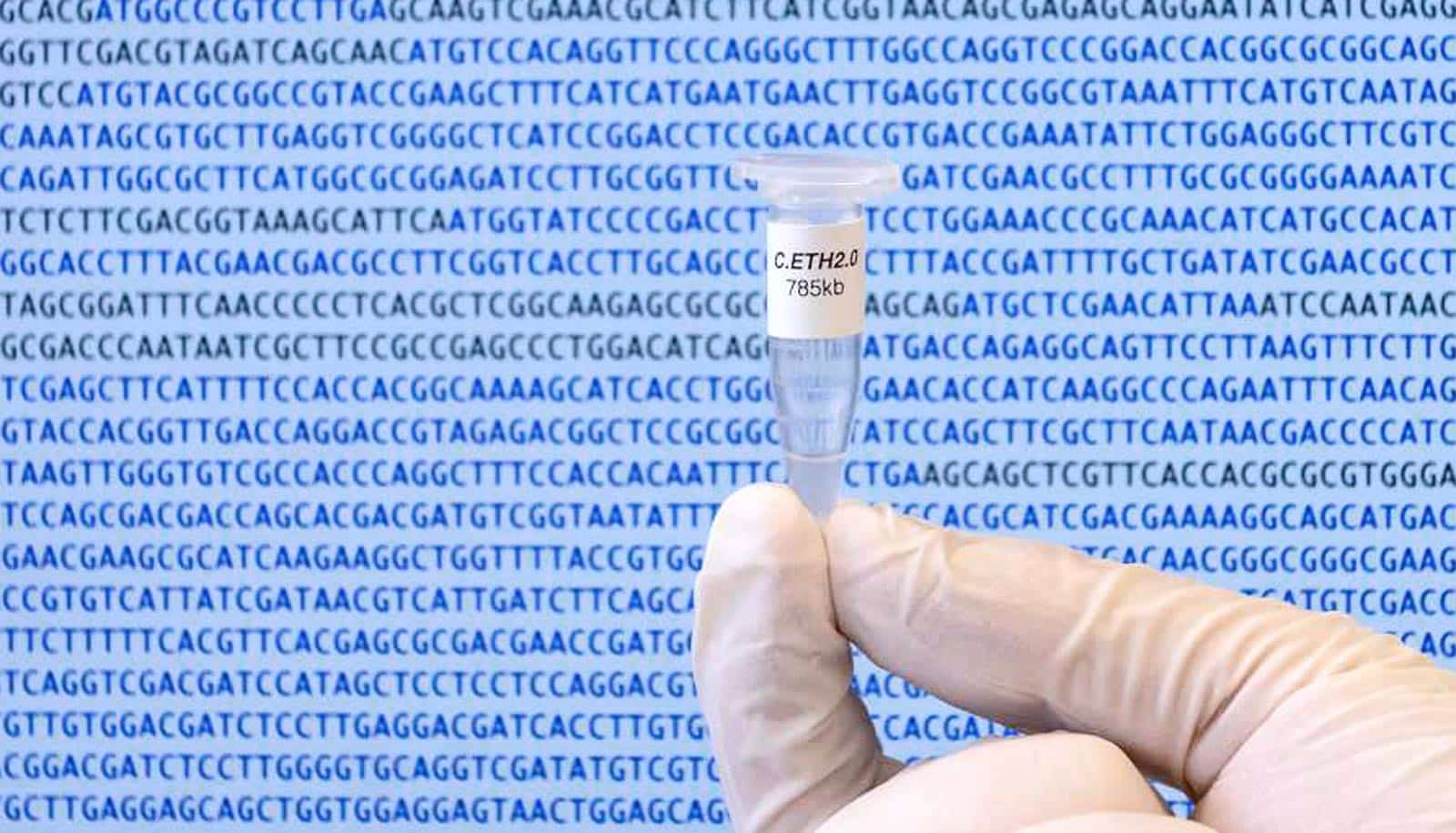For the first time, scientists have sequenced and annotated the genome of a giant squid, which shed light on its life in the depths of the sea.
Sailors’ yarns about the Kraken, a giant sea-monster lurking in the abyss, may have an element of truth.
In 1857, the Danish naturalist Japetus Steenstrup linked the tall tales of ships being dragged to the ocean floor to the existence of the giant squid: A 10-armed invertebrate, credibly believed to grow up to 13 meters (42 feet) and weigh over 900 kg (1,984 pounds).
“Our initial genetic analysis generated more questions than it answered.”
“These new results may unlock several pending evolutionary questions regarding this mantled species,” says research leader Rute da Fonseca from the Center for Macroecology, Evolution and Climate (CMEC) at the Globe Institute of the University of Copenhagen.
Throughout the years researchers have collected only relatively few remains of giant squids (Architeuthis dux) from around the world.

Using mitochondrial DNA sequences from these samples, researchers previously confirmed that all giant squids belong to a single species.
“However, our initial genetic analysis generated more questions than it answered,” says Tom Gilbert, professor at the GLOBE Institute, who contributed to the previous work.
Producing a high-quality genome assembly for the giant squid proved as challenging as spotting one of these animals in their natural environment, but was an important effort as the genome is the ultimate toolkit available to an organism.
Giant squid challenges
The fact that the available samples came from decomposing animals, usually preserved in formalin or ethanol at museums around the world, posed the first challenge. That meant researchers could not use most of them to get the high-quality DNA necessary for a good genome assembly.
Furthermore, elevated levels of ammonia and polysaccharides in the tissues likely led to repeated failures in producing suitable libraries for nearly all available sequencing technologies.
“This project reminds us that there are a lot of species out there that require individually optimized laboratory and bioinformatics procedures,” says da Fonseca, who started leading the project as an assistant professor in the biology department.
1,200 meters below the sea
The researchers got hold of a freshly frozen tissue sample of a giant squid collected near New Zealand—an incredible stroke of luck, according to the research leader.
Using this sample, the researchers successfully produced the best available cephalopod genome. This “genomic draft” provides a unique possibility to address many emerging questions of cephalopod genome evolution, the researchers say.
By allowing the comparison of the giant squid with the genomes of better-known types of cephalopods, scientists now hope to discover more about the mysterious giant creatures—without having to catch or observe them in the depths of up to 1,200 meters they inhabit. For example, the new genomic data might allow scientists to explore the genetic underpinnings of the giant squid’s size, growth rate, and age.
The paper appears in GigaScience. The Villum Fonden, Marie Curie Actions, and the Portuguese Science Foundation (FCT) supported the work.
Source: University of Copenhagen


